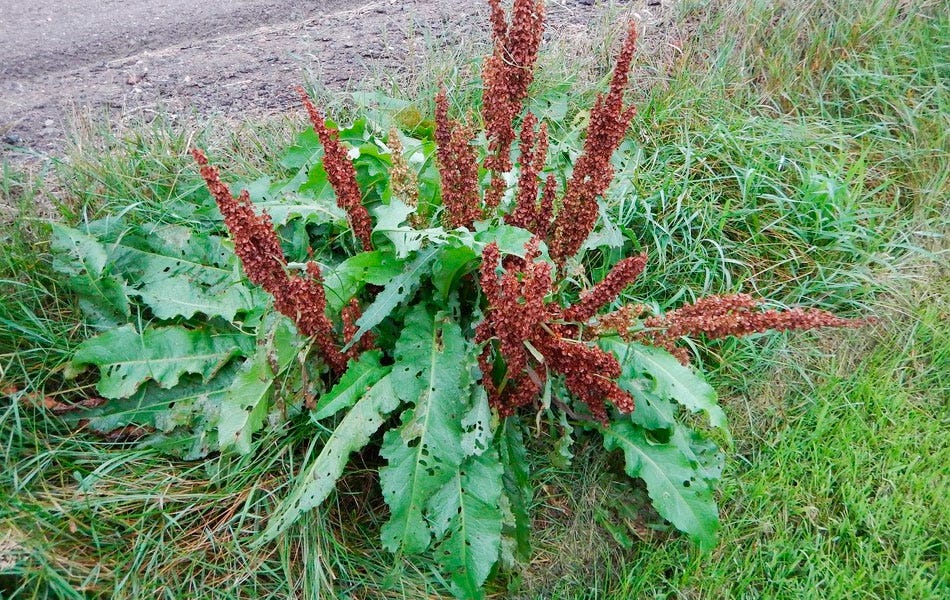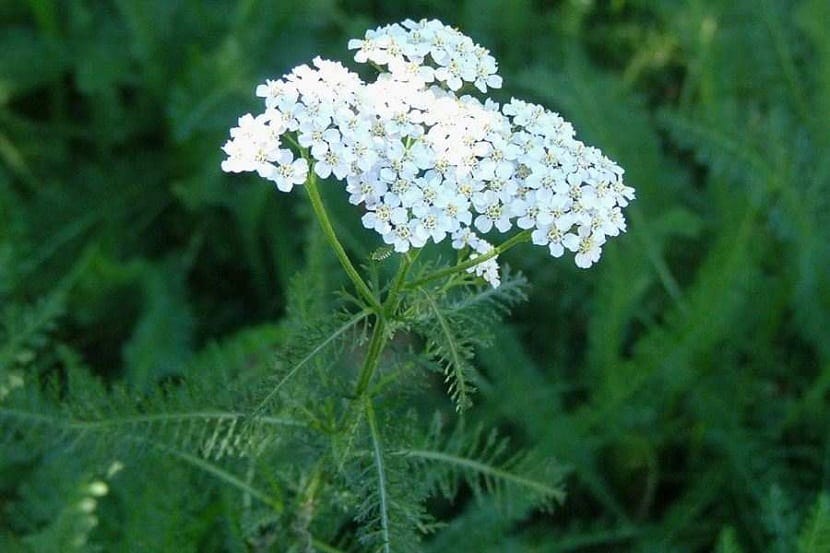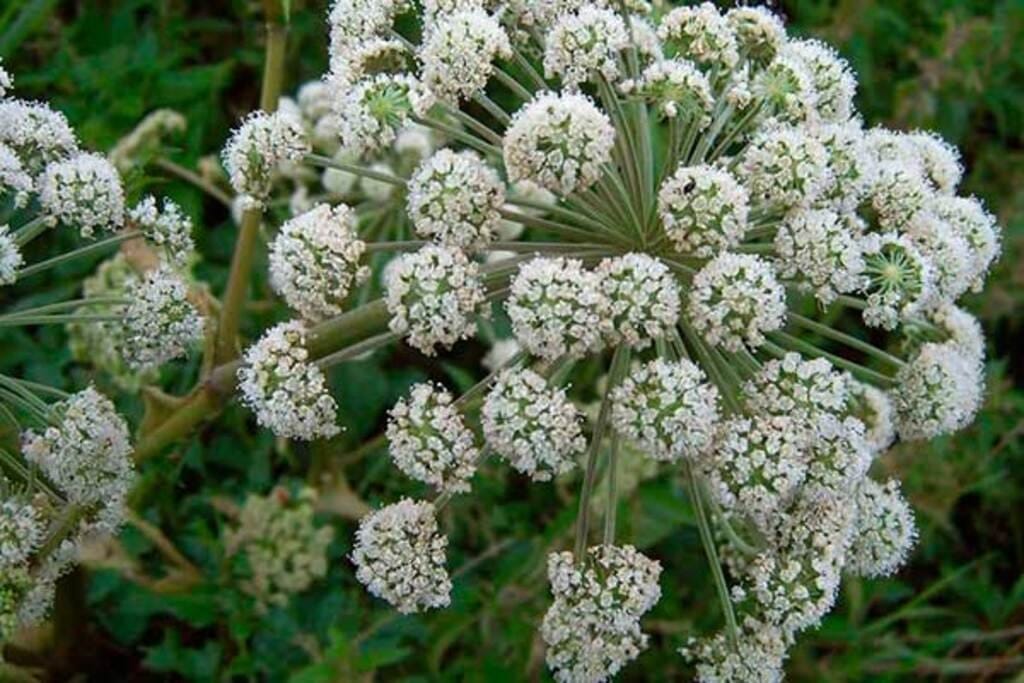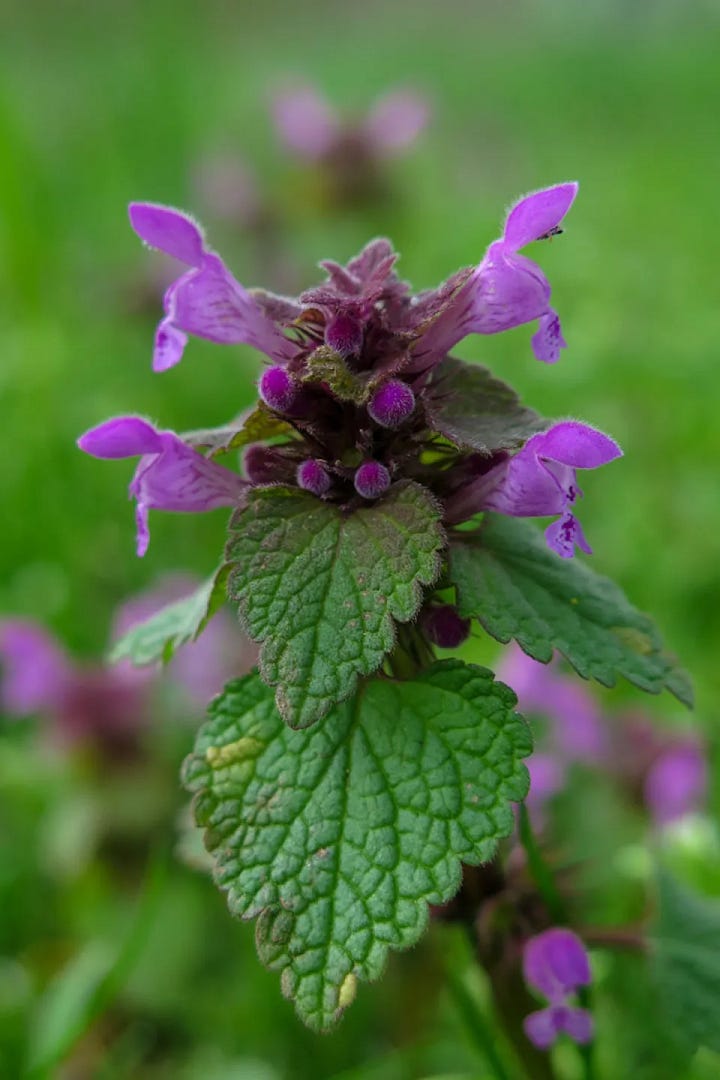Bitters 101: What They Are and Why Your Body Needs Them
What Are Bitters? A Deep Dive into Their Role in Holistic Health
Disclaimer: The information provided on this blog is for educational purposes only and is not intended to diagnose, treat, cure, or prevent any disease. Always consult a qualified healthcare professional before starting any new herbal remedy, especially if you are pregnant, nursing, taking medications, or have a medical condition. The author is not responsible for any adverse effects or consequences resulting from the use of the information shared here.
With that out of the way…
Welcome to The Wise Weed, come on in, take a seat. We’re just about to get started with an introduction to bitters. It’s Spring for some of us, Fall for others. No matter what part of the experience you’re sharing, I’ve got you covered.

Bitters 101: What They Are and Why Your Body Needs Them
What is a Bitter?
Bitters are herbs known for their strong, bitter taste, but they’re so much more than just flavor. They actually kickstart a whole series of reactions in your body, making them a powerhouse in holistic and preventative medicine. Think of them as multitaskers—they support your overall health by helping your body work better as a whole. Plus, they’re amazing for digestion! Historically, bitters were sold as medicinal tonics and were even used in classic cocktails. Today, they’re made by soaking bitter herbs and spices in alcohol to create concentrated tinctures. If you’re avoiding alcohol, no worries—vinegar can be used instead to make alcohol-free bitters, called acetums and in many cases, you can often consume fresh plant material if you have it. Bitters are herbs with a strong, bitter taste, but they offer benefits beyond just flavor.
In short, bitters are the unsung heroes of the plant world, helping you feel balanced, calm, and vibrant—inside and out.
How Bitters Work
At the heart of most herbal bitters lies something called "The Bitter Principle." This isn’t just one single compound but rather a group of chemical constituents—like volatile oils, alkaloids, or sesquiterpenes—that give bitters their signature sharp, bitter taste. These compounds are the key players behind the magic of bitters.
There are bitter receptors all over the body, including in the nervous system, the heart, and the vasculature. They are also on your tongue, and when you taste something bitter, it’s not just a flavor—it’s a signal. The ingestion of a bitter herb leads to a "cascade of events" due to the activation of these receptors. The bitterness is detected by these specialized receptors on your tongue, which send a message through your nerves to the central nervous system. This message then travels to your gut, where it stimulates the release of gastrin, a digestive hormone that is like a conductor, orchestrating a cascade of responses that kickstart and enhance the entire digestive process.
But it doesn’t stop there. This initial trigger sets off a chain reaction that supports not just digestion but overall health. Bitters stimulate the production of digestive enzymes, improve nutrient absorption, and even promote healthy liver function by encouraging bile production. They also help regulate appetite, making them a great tool for those who struggle with overeating or even under-eating.
In essence, bitters act as a wake-up call for your digestive system, priming it to work more efficiently. By engaging your body’s natural reflexes, they help you process food better, absorb more nutrients, and maintain a healthier gut. And because digestion is so closely tied to overall well-being, the benefits of bitters ripple out, supporting everything from energy levels to immune function.
So, the next time you taste something bitter, remember: it’s not just a flavor—it’s your body’s invitation to heal and thrive.
Effects of Bitters
Stimulation of digestive secretions, bitters stimulate the flow of digestive juices, for example:
Saliva: Begins carbohydrate digestion and prepares the stomach for incoming food.
Gastric Acid (HCl): Helps break down proteins and absorb minerals like calcium and magnesium.
Pancreatic Enzymes: Aid in the digestion of fats, proteins, and carbohydrates.
Bile from the Liver and Gallbladder: Essential for fat digestion and detoxification.
By enhancing the secretion of these digestive fluids, bitters can improve nutrient absorption, support liver function, and help with issues like bloating, sluggish digestion, and occasional heartburn.
This includes hormones, enzyme secretions in the intestines, mucosal secretions in the intestines, and pancreatic enzyme secretions. This aids a great range of problems that have their basis in inefficient or allergy-distorted digestion issues.
Liver and gallbladder support
Bitters aid the liver in its work of detoxification and increase the flow of bile (choleretic action) while simultaneously stimulating the gallbladder to secrete more bile into the small intestine (cholagogue action). A healthy flow of bile helps rid the liver of waste, prevents the formation of gallstones, and emulsifies lipids.
Appetite stimulation
Bitter foods are said to restore the appetite, especially during convalescence.
Blood sugar regulation
Bitters have a regulatory effect upon the secretion by the pancreas of the hormones that regulate blood sugar, insulin, and glucagon—Link to studies, 1,2,3
Gut repair:
The gut lining is a critical barrier that protects your body from harmful substances while allowing nutrients to pass through. When this lining becomes damaged—due to factors like poor diet, stress, infections, or medications—it can lead to a condition often referred to as "leaky gut" (intestinal permeability). This is where bitters come in as a powerful ally.
Bitters work to repair the gut lining by stimulating the body’s natural self-repair mechanisms. They help the gut wall repair damage through stimulating self-repair mechanisms.
Potential for resolving indigestion
Indigestion is what started me working with and learning about bitters. I’ve always run a little on the hot side and as I’ve gotten older it’s caught up with me threefold. Bitters have changed my life completely, and I’m able to eat again without my stomach turning everything into acid.
The net result of these actions is said to decrease chronic indigestion, which is quite common among certain groups, namely those that consume:
Processed foods (high in additives, preservatives, and artificial ingredients)
Excess sugar (including sugary snacks, sodas, and desserts)
Refined carbohydrates (like white bread, pastries, and pasta)
Fried and greasy foods (which are hard to digest and can irritate the gut lining)
Dairy products (especially for those who are lactose intolerant)
Gluten-containing foods (for individuals with gluten sensitivity or celiac disease)
Alcohol (which can disrupt gut flora and damage the gut lining)
Caffeinated beverages (like coffee and energy drinks, which can overstimulate the digestive system)
Spicy foods (which may irritate the stomach lining in some people)
Large, heavy meals (that overwhelm the digestive system)
In traditional healing systems like Traditional Chinese Medicine (TCM) and Ayurveda, certain foods are thought to have a ‘warming’ affect in the body, and others a ‘cooling’ affect. The type of foods listed above can warm things up—think inflammation, overstimulation, heartburn, indigestion, or that feeling of being ‘wired and tired.’ They might leave you feeling like you’re running a little too hot, both physically and energetically and in some extreme cases, you might find yourself having hot flashes. And yes, men to are prone to hot flashes in cases high digestive heat.
This is where bitters come in, they’re like the cool, calm friend who helps you reset. By tackling the root causes of indigestion and supporting your gut’s natural repair processes, bitters can ease those common digestive woes and set you up for long-term gut health. In fact, some herbalists even talk about something called ‘Bitter Deficiency Syndrome’—basically, when your diet’s missing those bitter flavors, your body might feel out of balance.
But bitters aren’t just one-trick ponies. They’re packed with benefits. Some examples include:
Hops and Gentian are like nature’s chill pills, helping to calm your nerves.
Goldenseal and Oregon Grape are like your gut’s personal bodyguards, fighting off unwanted microbes.
Yarrow, Calendula, and my personal favorite, Wormwood, are like firefighters, cooling down inflammation wherever it flares up.

Warming and Cooling Bitters
And, not all bitters cool down the body. Some are used for warming up the body. Sluggish Digestion, Gas and Bloating, Constipation, and Fatigue After Eating are common symptoms can become chronic issues over time. A cold gut often leads to slow, inefficient digestion. Food may sit in the stomach for too long, causing bloating, heaviness, and discomfort after meals.Some other common issues include:
Poor Nutrient Absorption
Cold ExtremitiesWater Retention and Dampness
Loss of Appetite
Loose Stools or Diarrhea
Emotional Imbalances
Plus, bitter plants are often ‘alteratives’—fancy herbalist speak for ‘detoxifiers.’ They help cleanse your blood, liver, skin, and even your lymphatic system.
Here’s a list of bitters that are considered warm or heat-inducing, along with a bit about their unique properties:
Warming/Hot Bitters
Angelica (Angelica archangelica):
Known as a warming bitter, Angelica is often used to stimulate digestion, improve circulation, and ease cold, damp conditions like bloating or sluggish digestion. It’s especially helpful in colder climates or for people who tend to feel chilly.
Dandelion Root (Taraxacum officinale):
Dandelion root, unlike the cooling dandelion leaf, has a slightly warming quality. It supports liver function, improves bile flow, and gently warms digestion.
Burdock Root (Arctium lappa):
Burdock is a mild bitter with a warming, grounding energy. It’s often used to support the liver, cleanse the blood, and warm up sluggish digestion.
Yellow Dock (Rumex crispus):
This bitter herb has a warming, drying quality. It’s commonly used to support liver health, relieve constipation, and clear heat from the body (paradoxically, it can cool while also warming digestion).
Artichoke Leaf (Cynara scolymus):
Artichoke has a mild warming effect and is fantastic for stimulating bile production, supporting liver detoxification, and warming up a sluggish digestive system.
Cinnamon (Cinnamomum spp.):
While not a classic bitter, cinnamon has a bitter component and is intensely warming. It’s often used to stimulate digestion, improve circulation, and add a cozy warmth to herbal formulas.
Ginger (Zingiber officinale):
Another warming herb with a bitter edge, ginger is a go-to for cold, sluggish digestion. It’s also fantastic for nausea and improving circulation.
Gentian (Gentiana lutea):
While gentian is often considered cooling, it has a warming effect on digestion. It’s one of the strongest bitters, making it a great choice for stimulating appetite and warming up a cold, sluggish stomach.
Black Pepper (Piper nigrum):
Black pepper has a bitter, pungent quality and is intensely warming. It’s often used to enhance digestion and increase the bioavailability of other herbs.
Mustard Seed (Brassica spp.):
Mustard seeds are bitter and intensely heating. They’re used to stimulate digestion, improve circulation, and clear congestion.

When to Use Cooling Bitters
Cooling bitters are ideal for:
Excess heat symptoms: Heartburn, acid reflux, hot flashes, or inflammatory conditions.
Summer or warm climates: To help the body stay balanced during hot weather.
Heat-related skin issues: Acne, rashes, or eczema caused by internal heat.
Overactive digestion: When digestion feels too fiery or overstimulated.
Cooling Bitters
Dandelion Leaf (Taraxacum officinale):
While dandelion root is slightly warming, the leaf is cooling and diuretic. It’s great for reducing heat, supporting the liver, and promoting detoxification.
Peppermint (Mentha piperita):
A refreshing, cooling bitter that soothes the digestive tract, reduces inflammation, and calms heat-related issues like heartburn or acid reflux.
Chicory (Cichorium intybus):
A cooling bitter that supports liver health, reduces heat in the digestive system, and promotes healthy bile flow.
Burdock Root (Arctium lappa):
While burdock is mildly warming in some contexts, it’s often used as a cooling herb to clear heat from the blood, support skin health, and reduce inflammation.
Yellow Dock (Rumex crispus):
A cooling bitter that helps clear heat from the liver and digestive system, often used for skin conditions and constipation caused by excess heat.
Artichoke Leaf (Cynara scolymus):
A cooling bitter that supports liver function, reduces heat-related digestive issues, and promotes healthy cholesterol levels.
Milk Thistle (Silybum marianum):
A cooling bitter known for its liver-protective and anti-inflammatory properties. It’s great for detoxification and reducing heat in the body.
Calendula (Calendula officinalis):
A cooling bitter with anti-inflammatory and lymphatic-supporting properties. It’s often used to soothe irritated tissues and reduce heat-related skin issues.
Yarrow (Achillea millefolium):
A cooling bitter that helps reduce inflammation, clear heat from the blood, and support circulation. It’s also great for fevers and heat-related infections.
Chamomile (Matricaria chamomilla):
A gentle cooling bitter that soothes the digestive tract, calms inflammation, and reduces heat-related stress or irritability.
Lemon Balm (Melissa officinalis):
A cooling bitter that calms the nervous system, reduces heat-related anxiety, and supports digestion.
Nettle (Urtica dioica):
While not intensely bitter, nettle has a cooling, nourishing quality that helps reduce inflammation, support the kidneys, and clear heat from the body.


Energetics of Bitters
Bitter plants are like nature’s thermostat—some cool you down, while others warm you up! For example, bitters like peppermint and gentian are refreshing and cooling, perfect for calming hot flashes, inflammation, or a fiery digestive system that’s working overtime. They’re like a tall glass of iced tea for your insides when you’re feeling ‘overheated.’
On the other hand, bitters like angelica and ginger add warmth to the body. These are great for cold, sluggish digestion or when you’re feeling chilly and need a little internal coziness. It’s all about finding the right bitter for your body and the season!
Over time, bitters also have a drying effect on the body. This can be helpful if you’re dealing with too much dampness or fluid retention. Plus, they have a natural ‘downward’ energy, which makes them awesome for relieving constipation and keeping things moving smoothly. Some bitters even help regulate menstrual cycles, which is a nice bonus.
In the short term, bitters can actually feel moistening to your digestive system because they kickstart your body’s natural juices—like saliva, stomach acid, and bile. But over the long haul, all those extra secretions leaving your body can lead to a more drying effect overall.
How long can I use bitters?
Herbs are powerful allies in healing, but they’re not meant to be a long-term crutch. Instead, think of them as gentle guides that help nudge your body back into balance. Their role is to support your system while you make the deeper changes needed for lasting health—like adjusting your diet, managing stress, or improving sleep.
For example, bitters can work wonders for digestion, but they’re most effective when used short-term to kickstart your body’s natural processes. Over time, the goal is to wean off them as your digestion improves and your body regains its ability to function optimally on its own. This is why herbalists often recommend cycling herbs—using them for a few weeks, then taking a break to see how your body responds.
That said, herbs alone aren’t a magic fix. True healing happens when you pair them with mindful lifestyle changes. Are you eating foods that nourish your body? Are you moving regularly and managing stress? These factors play a huge role in how effective herbs can be. Think of it like this: herbs are the spark, but diet and lifestyle are the fuel that keeps the fire burning.
So, while herbs can be a wonderful starting point, their real power lies in helping you create a foundation for long-term health. By using them intentionally and making supportive changes, you’re not just treating symptoms—you’re building a healthier, more balanced you.
The recommended time period for using bitters depends on the individual, their health goals, and the specific herbs being used. However, there are some general guidelines to keep in mind. Here's a breakdown:
Short-Term Use (Days to Weeks)
Bitters are often used short-term to address acute issues or kickstart digestion.
Before meals: Take bitters 10–15 minutes before eating to stimulate digestive juices and improve nutrient absorption. This can be done once daily to start, preferably breakfast, if not the heaviest meal of the day.
I suggest starting on your day(s) off. So that you understand how it may effect you. You might find yourself a bit more gasy then usual, diarrhea can be common as well as more frequent urination; at the start. Bitters stimulate the production of digestive juices (stomach acid, bile, and enzymes), which can lead to increased activity in the gut, such as, looser stools, especially if the body is not used to the increased activity. As the digestive system "wakes up," it may produce more gas as it breaks down food more efficiently.
Many bitters, like dandelion leaf, have mild diuretic properties, meaning they help the kidneys flush out excess fluids and toxins. This can lead to more frequent urination, especially when first starting bitters. These side effects are usually short-lived and a sign that the bitters are working. As the body adjusts to the increased digestive activity and detoxification, these symptoms typically subside.
If you are experiencing pain or other major discomfort discontinue use, or lower your dose considerably. Everyone is different and some people are more sensitive to a given type of plant, or the experience in general.
Dosing bitters depends on the plant and the form you’re using. For most bitters, a standard dose is 10–30 drops of tincture or 1–2 teaspoons of tea before meals. However, some herbs, like wormwood, require extra caution due to potent compounds like thujone.
Always start with a low dose, listen to your body, and consult a professional if you’re unsure. Remember, bitters are powerful tools, but they work best when used mindfully and in harmony with a healthy lifestyle.
Cycling Bitters
To avoid overstimulation cycling your bitters:
Use bitters for 2-3 weeks, then take a break for 1–2 weeks.
Alternatively, use bitters 5 days a week with 2 days off.
Factors to Consider
Individual Needs: Some people may need bitters for longer periods, while others may only need them occasionally.
Herb Strength: Strong bitters (like gentian or wormwood) are best used short-term, while mild bitters (like dandelion or chamomile) can be used longer.
Health Goals: Are you using bitters for acute symptoms, chronic issues, or general maintenance? This will determine the duration.
Energetics: If bitters are drying or cooling, take breaks to avoid over-drying or cooling the body.
General Recommendations
Always seek advice from your doctor, and ask about and make your self aware of interactions with your current medications.
Acute issues: 1–3 weeks.
Chronic issues: 4–12 weeks, with breaks and remember those lifestyle changes I mentioned.
Step-by-Step Allergy Test for Plants
Please note this is not a replacement for an allergy test done by a professional, but I’m mentioning it here for the safety’s sake.
Skin Patch Test
Rub a small amount of the plant (extract, tincture, salve) on the inside of your wrist or elbow.
Wait 24 hours and observe for any redness, itching, swelling, or irritation.
If no reaction occurs, proceed to the next step.
Lip Test
Place a small amount of the plant (or its extract) on your lips and hold it there for a few minutes.
Wait 15–20 minutes and check for any tingling, burning, swelling, or discomfort.
If no reaction occurs, proceed to the next step unless you are working with a salve or similar. Proceed with small doses for a week to start and if there are no rashes, itching, swelling or other adverse symptoms proceed with suggested usage.
Tongue Test (Not for Salves or similar)
Place a small amount of the plant (or its extract) on your tongue and hold it there for 1–2 minutes.
Spit it out and wait 15–20 minutes to see if you experience any tingling, swelling, or discomfort in your mouth or throat.
If no reaction occurs, proceed to the next step.
Small Internal Dose (Not for Salves or similar)
Take a very small dose of the plant (e.g., 1–2 drops of tincture in some water or a sip of tea made from the plant).
Wait 24 hours and monitor for any signs of an allergic reaction, such as hives, swelling, difficulty breathing, or digestive upset.
If no reaction occurs, you can gradually increase the dose as needed.
This step-by-step approach allows you to test for allergic reactions in a controlled way, starting with external contact and gradually moving to internal use. It’s especially important for people with known allergies, sensitive skin, or a history of allergic reactions. Always consult your physician before starting any type of herbal treatment.
Important Notes
Not Foolproof: While this method can help identify potential allergies, it’s not 100% reliable. Severe allergic reactions (anaphylaxis) are rare but possible.
Consult a Professional: If you have a history of severe allergies, consult a healthcare provider before testing new plants.
Know the Plant: Make sure you’re using the correct plant and that it’s safe for internal use. Some plants are toxic and should never be ingested.
A Word or Two, About Tinctures
Tinctures for most plants can be found for sale online, less common ones can be found with some extra effort. Order from reputable sources only and always check for reviews, and triple check your sources, including anything I say.
If at all possible, my suggestion is to always make your own. And if that sort of thing excites you, stay stunned. Upcoming later this summer on The Wise Weed, I cover making tinctures, and non-alcoholic vinegar’s and Glycerite’s.
That’s all for now. Please push in your seat, check around you for any belongings and have a good evening. Please take care of yourselves, and watch out for one another on your way.




